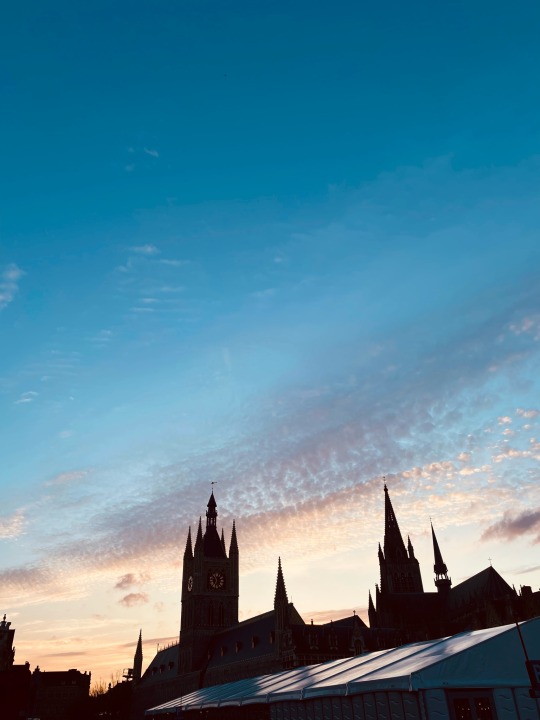#ypres
Text
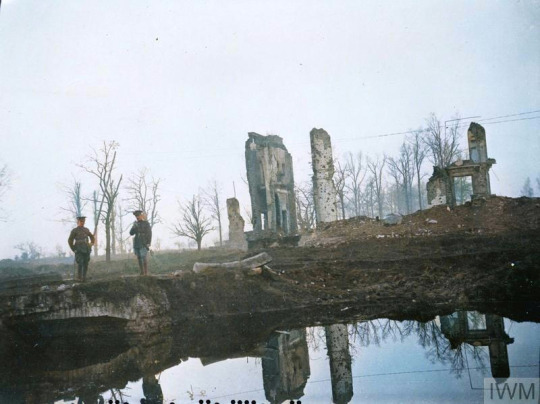
Ruins of the Chateau Segar, Near Ypres. WWI
#Ypres#World War One#The Great War#1918#1917#1916#1914#first world war#history#historical#historical photos#world history#canadian history#military history#british army#Indian History#war#military#somme#Battle of the Somme#france#belgium#the western front#vimy ridge#Battle of Vimy Ridge
86 notes
·
View notes
Text
Population: 35,039
27 notes
·
View notes
Text

Soldiers in woodland near Ypres marching along 'Regent Street', 1915
by Fortunino Matania
This was drawn by Matania whilst on a visit to the front line in 1915 and was accompanied by a further written report from the artist in the same issue. The scene depicts relief soldiers marching through 'Plug Street' or Ploegsteert Woods 8 miles from Ypres on the 'Regent Street' back to the front line trenches. Many of the main thoroughfares and trench links were given nicknames such as 'Regent Street', 'Rotten Row', 'Warrington Road' and 'Hellfire Corner'. The nicknames were painted on wooden signs which were hung for reference as can be seen clearly in this illustration with the sign board nailed to a tree.
#fortunino matania#art#ypres#woodland#ww1#wwi#first world war#world war#the great war#europe#european#history#belgium#england#britain#english#british#soldiers#world war one#world war 1#woods
69 notes
·
View notes
Photo

Romaine Brooks, La France Croisée, 1914
#romaine brooks#art#art history#womens art#womeninart#ida rubinstein#painting#propaganda art#20th century art#Women Artists#lesbian art#wwi#the great war#ypres
54 notes
·
View notes
Text
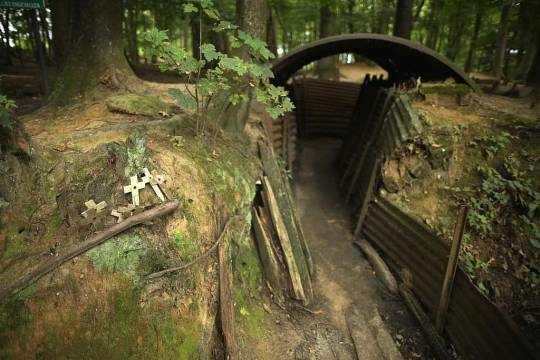
Remembrance tributes inside the preserved WWI-era trench system in Sanctuary Wood, in Ypres, Belgium.
33 notes
·
View notes
Photo
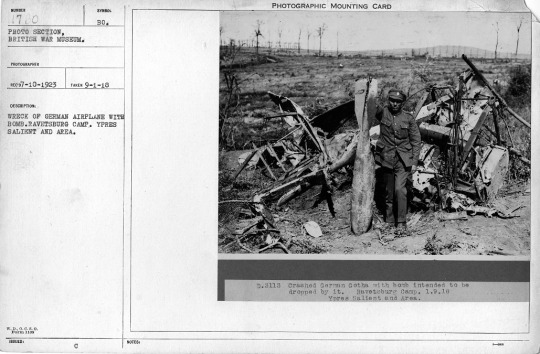
Wreck of German airplane with bomb. Ravetsburg Camp. Ypres Salient and area, September 1, 1918. From the British War Museum.
Record Group 165: Records of the War Department General and Special Staffs
Series: British Photographs of World War I
Image description: A soldier in a WWI uniform stands in front of the twisted wreckage of an airplane. He is propping up a bomb that is taller than he is. In the background we can see empty ground with a few damaged trees.
Transcription:
NUMBER 17BO
SYMBOL BO.
PHOTO SECTION, BRITISH WAR MUSEUM.
PHOTOGRAPHER
REC’D 7-10-1923
TAKEN 9-1-18
DESCRIPTION:
WRECK OF GERMAN AIRPLANE WITH BOMB. RAVETSBURG CAMP. YPRES SALIENT AND AREA.
D.3113 Crashed German Gotha with bomb intended to be dropped by it. Ravetsburg Camp. 1.9.18 Ypres Saliant and Area.
#archivesgov#September 1#1918#1910s#World War I#WWI#military#aircraft#bomb#don't do this#Western Front#Ypres
29 notes
·
View notes
Text
From Ypres 1915, by Canadian poet Alden Nowlan:
Oh, I know they were mercenaries
in a war that hardly concerned us.
I know all that.
Sometimes I’m not even sure that I have a country.
But I know that they stood there at Ypres
the first time the Germans used gas,
that they were almost the only troops
in that section of the front
who did not break and run,
who held the line.
Perhaps they were too scared to run.
Perhaps they didn’t know any better
— that is possible, they were so innocent,
those farmboys and mechanics, you only have to look
at old pictures and see how they smiled.
Perhaps they were too shy
to walk out on anybody, even Death.
Perhaps their only motivation
was a stubborn disinclination.
Private McNally thinking:
You squareheaded sons of bitches,
you want this God damn trench
you’re going to have to take it away
from Billy McNally
of the South End of Saint John, New Brunswick.
And that’s ridiculous, too, and nothing on which to found a country.
Still
It makes me feel good, knowing
that in some obscure, conclusive way
they were connected with me
and me with them.
#the second battle at ypres started 109 years ago today#wwi#ypres#canadian history#poetry#ypres 1915#alden nowlan
7 notes
·
View notes
Text

#doge#ww1#ypres#le lots and lots of mines has arrived#le krauts going kablooey has arrived#le all wars are stupid but ww1 is extra stupid has arrived
133 notes
·
View notes
Text
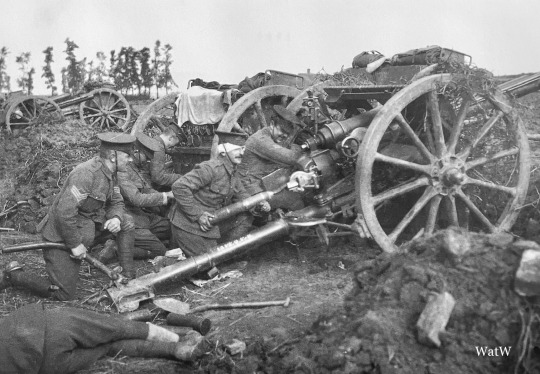
A British 18 pound field gun gets ready for action from its camouflaged position - Ypres, Oct 1914
#worldwarone#ww1#world war one pictures#british army#britisharmy#woods of ypres#battle of ypres#Ypres#1914#field gun#ww1 pictures
66 notes
·
View notes
Text

Tyne Cot Cemetery, Ieper, Belgium - 2017
#cemetery#graveyard#tynecot#ieper#ypres#belgium#belgique#travel#reizen#photography#fotografie#architecture#sky
12 notes
·
View notes
Text
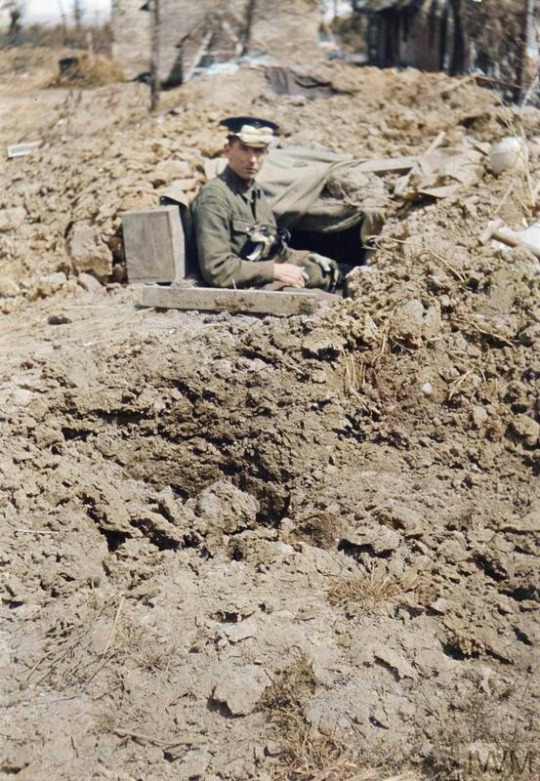
A British signaller in a dugout near Ypres with a first issue respirator, late April 1915.
#ypres#historical photos#world war 1#1917#canadian history#history#world war 1 stories#ww1#ww1 poetry#ww1 stories#ww1 art#ww1 history#wwi#world war one#The Great War#The First World War
109 notes
·
View notes
Text

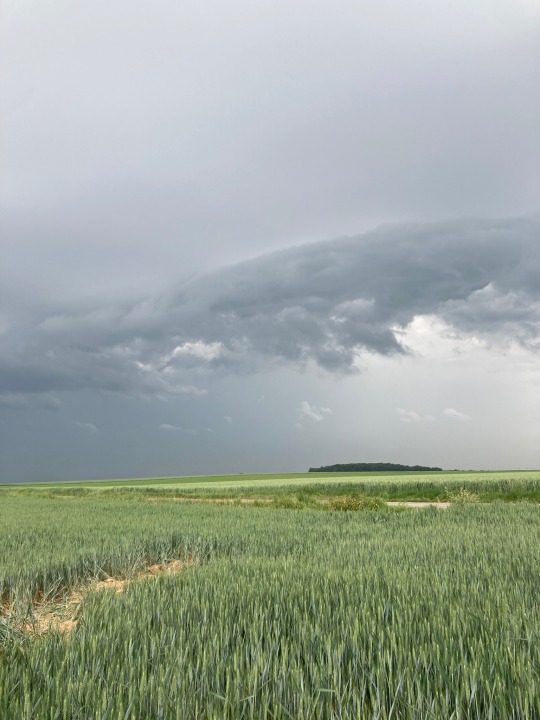
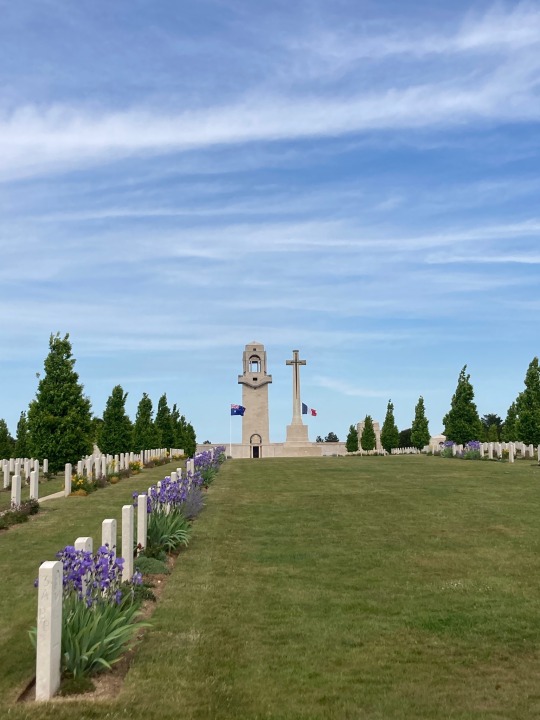
“We are the dead.
Short days ago
We lived, felt dawn
Saw sunset glow.”
Lest we forget.
Poem Excerpt: “In Flanders Fields” by John McRae
Photos: @ochipi taken while demining at the Somme Region, France.
#armistice#armistice day#John McRae#in Flanders fields#Somme region#world war one#world war 1#world war i#ww1#wwi#uxo#archaeology#field archaeologist#November 11th#lest we forget#Ypres
66 notes
·
View notes
Text

French soldiers buying and reading newspapers at a kiosk in Rexpoede, in the far north of France (Department Nord, Region Nord-Pas-de-Calais) September 1917. The town is just 20 miles from Ypres, in Belgium, where the Battle of Passchendaele was being fought at this time. The battle was one of the bloodiest of the entire war, but is perhaps more infamous for the mud. The worst rains to hit the Flanders region for 30 years turned parts of the battlefield into a quagmire so deep that men and horses drowned in it.
#first world war#world war one#wwi#ww1#history#europe#european#france#french#première guerre mondiale#nord#department#north#northern#ypres#belgium#flanders#soldiers#rexpoede#region#nord pas de calais#1917#newspapers#newspaper#journal#journaux
487 notes
·
View notes
Photo

An unidentified Austrailan soldier standing amidst the ruins of Ypres, Belgium, and looking towards the remains of the Cloth Hall.
Frank Hurley
Belgium: Flanders, West-Vlaanderen, Ypres
3 September 1917
144 notes
·
View notes
Text
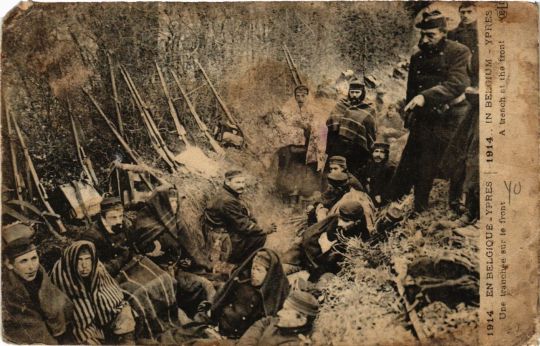
A trench on the Belgian front near Ypres during the First World War
French vintage postcard
#historic#near#belgian#the first world war french#photo#briefkaart#vintage#sepia#photography#ypres#carte postale#postcard#postkarte#war#postal#tarjeta#ansichtskarte#french#old#ephemera#postkaart#world#trench
7 notes
·
View notes
